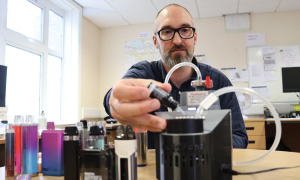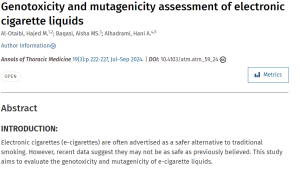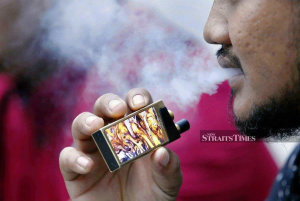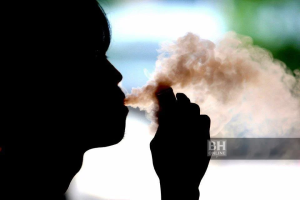
LETTERS: The Education Ministry is mulling anti-vape rules for schools, according to a recent NST report.
On March 5, the Consumers Association of Penang (CAP) said about 15 female students were found to be vaping, with three to four of them addicted to nicotine.
In addition, vape and electronic cigarette usage has catapulted three-fold since the Covid-19 pandemic.
Vaping is often thought of as safer than cigarette smoking, but this is not so. Both vaping and smoking are addictive and introduce potentially toxic chemicals into your body.
Vaping actually creates an aerosol (or mist) that contains micro-particles of nicotine, metal and other harmful substances.
Vaping can lead to an increased risk of respiratory diseases including asthma and other lung diseases like bronchiolitis and even cancer.
Additionally, other organs like the heart and brain can also be damaged. Arteries get narrowed, blood pressure is raised, which may lead to a heart attack or stroke.
Last year, in another report, a secondary school teacher in Selangor saw a few students vomiting after inhaling a vape shared among themselves.
Nicotine is highly addictive. It makes you go into a craving frenzy so much so you want more and more of the stuff. Life would become a nightmare.
Many students who started vaping eventually “graduate” to smoking cigarettes, which is akin to jumping from the frying pan into the fire, as cigarettes contain higher amounts of harmful chemicals.
There have also been incidents of batteries in vaping devices exploding and causing serious injuries and burns.
It is a concern that in the long run, especially for students who are involved in both vaping and smoking, their well-being will be tremendously affected.
Those who are already addicted to nicotine due to vaping or smoking tobacco should get help from the medical sector through Nicotine Replacement Therapy (NRT).
As an adjunct, they should get their bodies to move with deep rhythmic breathing as exercise distracts one from the desire to vape and also makes you feel good through the release of endorphins.
In September last year, the World Health Organization published “Freedom from tobacco and nicotine: guide for schools,” and “Nicotine- and tobacco-free school toolkit”, with the aim of helping protect children’s health, especially students.
The guide points out four ways to foster a nicotine- and tobacco-free environment, including banning nicotine and tobacco products on school grounds; prohibiting the sale of nicotine and tobacco products near schools; banning direct, indirect ads and promotion of nicotine and tobacco products near schools; and refusing sponsorship or engagement with tobacco and nicotine industries.
Furthermore, the sale and supply of disposable vapes is being banned in England, Scotland and Wales. We should mull banning vaping too. We can allow a cooling-off period of around half a year for businesses to adjust to such a ban.
Hopefully, the ministry will consider banning vapes for all school-going students instead of mulling anti-vape rules just to regulate vaping.
Source: NST










